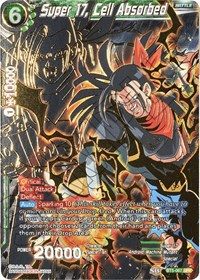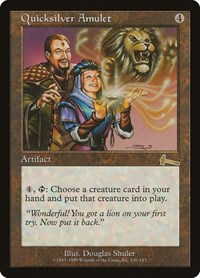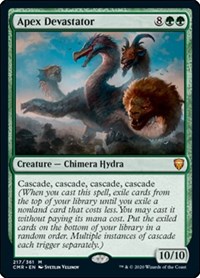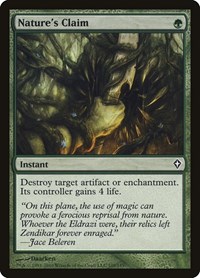The Moore Report

Here at Hobbymaster we’re conscious that sometimes, the only thing keeping our players from playing the deck they want to play is their wallets. In the spirit of helping these players out, we’ll be doing an article series where we spotlight a few cards available at Hobbymaster and look at some of the ways they’re underutilised, or try and find new uses for them. Hopefully this will help out some of our newer players, as well as get our veterans’ brains churning over new ideas.
Today I want to talk about Mono-Blue. Does everyone remember when this deck was dominating Standard tournaments over and over with the power of Thassa and Master of Waves? Yeah, me too. I don’t really want to go back there, because I still have nightmares about the number of 1/0 elementals I’ve had to try and deal with in my recent magic career. However, in the interest of doing something different, I’m taking one for the team. I hope you all appreciate the sacrifice I’m making.
So it turns out that Thassa, God of the Sea and Master of Waves are both still cards that you can play in Standard. They’ve largely fallen out of favour because their supporting cast of Judge’s Familiar, Cloudfin Raptor, Frostburn Weird, Nightveil Specter and Tidebinder Mage have all rotated out of the format. This is unfortunate, and a barrier to what we’re trying to achieve, don’t get me wrong. However, if you get a little creative you can construct what I believe is a competitive deck that won’t cost you an arm and a leg. I have been doing some research online and the following is a deck that looks really fun to play:
Maindeck
15 Island
Sideboard
2 Negate
.jpg)
What am I on about, right? Bear with me. Master of Waves is still an obscene card. In the old Standard you didn’t need to have six or seven devotion to win with it. Most of the time you did it for much less and it was still enough. Don’t even get me started on multiples. Thassa is still going to win you games by itself, like it used to. You won’t be able to put your Ensoul Artifact on an Ornithopter every game, so those games where it’s on a Drum instead are going to need some Thassa -fuelled assistance. Bident of Thassa is going to do what Bident of Thassa does, and that’s draw a lot of cards. Once you get past those cards, however, we’re really looking at a completely different deck.
This deck isn’t really a devotion deck. It has devotion cards in there because they’re incidentally good, but they’re not the main plan. You don’t really miss Tidebinder Mage or Frostburn Weird because you now have Ensoul Artifact. This card can win games fast, so the rest of the deck is built around making that happen. Apart from that, there are other little synergies that complement the main plan if the aforementioned enchant creature doesn’t get there. Let’s go through them.
Ornithopter is one of the reasons that this deck is even viable. It’s probably the best target for Ensoul Artifact, since it flies, but it also lets you cast your hand quicker in combination with Springleaf Drum. It also allows you to activate Military Intelligence on turn two if you’ve also cast either a one drop or another Ornithopter on the first turn. If you don’t find an Ensoul Artifact, Ornithopter is also the best holder of Ghostfire Blade, which can get in some quick damage. Finally, if all else fails, you can keep Ornithopter in your hand to allow you to cast Illusory Angel on turn three.
Triton Shorestalker and Hypnotic Siren are not Judge’s Familiar and Cloudfin Raptor. However, they do the job that they’re asked to do reasonably well. They still attack for one, they allow quick mana with Springleaf Drum and they provide decent devotion for Master of the Waves and Thassa. They will also give the deck some wins when pumped by Hall of Triumph. Ghostfire Blade, while expensive to equip, gives the deck a reasonable amount of reach when equipped to either of these creatures.
Omenspeaker is there as a fill-in. She is by no means amazing, but the scry 2 is going to smooth out the deck’s draws while also providing a decent blocker and devotion pip. This card could definitely be upgraded, but at the moment I think it’s the best option available in Standard.
I won’t cover Thassa or Master of Waves except to say that they’re very good (though not being able to rely on Thassa being a creature means that her numbers need to be limited), so the final creature to mention is Illusory Angel. This card could certainly be more than a 2-of, but because of the restrictive ability I think it pays to err on the side of caution. However, you do get a very good rate on this card. A 4/4 flying creature for three mana is nothing to scoff at, and combined with a quick Ensoul Artifact could spell doom for your opponents in a very efficient manner.
The spells have all been covered as an extension of the creature descriptions, so I don’t think I need to go into any further detail. But as you can see this deck has a few different angles of attack, and they’re not necessarily easy for opponents to come up with answers for. Generally the strategy is to either get a quick Ensoul Artifact or Military Intelligence going and back it up with an ever increasing board presence. Thassa, Bident and Master of the Waves act as the final nail in the coffin to put games away.
Moving onto the sideboard, you can see that it’s half full of various counterspells. Some combination of these are going to be good in various match-ups, and they fit into the plan of the deck by allowing you to follow the best strategy for the match-up while protecting your threats from their removal spells or huge creatures. Apart from that, we have Singing Bell Strike, Wall of Frost and Jace, the Living Guildpact for the midrange creature match-ups. Strike and Wall allow you to keep your opponent’s creatures at bay while providing devotion for your game winning threats, while Jace lets you filter your cards and slow down their key spells. Jace in particular is important in match-ups where you can’t rely on Bident to draw you extra cards, since you’ll want to be able to ensure that you draw enough spells to keep the pressure on your opponent. The Nykthos in the sideboard is there to bump up the land count when Ornithopters get sideboarded out, since doing so makes your Springleaf Drums a little harder to rely on.
.jpg)
If you’re not worried about the budget, a good way to beef up this deck would be the addition of fetch lands and Dig Through Time. Both Polluted Delta and Flooded Strand search for the land you want (Island!), and they also allow you to remove Islands from your deck so that you don’t draw them later in the game. This is important in a deck like this, since one of the ways you’ll win is by simply drawing more spells than your opponent does. When you start to add fetch lands to your deck, suddenly Dig Through Time becomes an attractive option to draw cards with because your graveyard will fill up a lot faster. Digging for two Master of Waves has to be enough to end games. If you want to add Dig Through Time, I’d probably start by cutting a Military Intelligence and possibly a Bident or Ghostfire Blade. You won’t be able to support many Digs, but the ones you do cast should be very good.
Beyond the change to fetchlands and Dig Through Time, there are a few other cards you could consider. Some people are playing Chasm Skulker as a way to combat End Hostilities. I’m not a huge fan of this right now because I don’t think there are many people playing exactly End Hostilities. It’s not great against Anger of the Gods, since Anger exiles it, and it is only good against one-for-one removal spells if you can set up a situation where you’re about to draw a bunch of cards from Bident of Thassa or Military Intelligences and have all of its triggers resolve. However, I do see a spot for this little fellow in the sideboard if we see a metagame shift towards more white control decks that rely on End Hostilities. As an aside, amusingly the indestructible clause on Darksteel Citadel doesn’t save your Ensoul Artifact from End Hostilities, since Hostilities also destroys cards attached to all creatures. Oops! Besides Skulker, I have also seen people championing Daring Thief. This one I like quite a bit. The inspired trigger has some synergy with the deck, since you can either tap the thief with Springleaf Drum, or cleverly use Thassa or Bident of Thassa to clear the way for an attack. I think it’s a bit cute, and Illusory Angel is probably better, but it is pretty cool to trade your opponent an elemental for their Siege Rhino (their now 1/0 elemental just dies!), or give your opponent an Ensoul Artifact and take their Whip of Erebos (yes, that works, you still have the creature). I’d also just generally encourage potential Mono-Blue mages to play with the numbers, because I’m by no means saying that the set-up of my list above is perfect.
I don’t think this deck the best deck in Standard. However, I would argue that it has the tools to be competitive in this format, considering how fast and unique its threats are. Ensoul Artifact on a Darksteel Citadel will cause huge problems for any deck, and while they’re scrabbling for answers you’re backing up your threat with more unblockable creatures and card-draw engines. If nothing else, this deck is very cheap to build up, which can mean a lot if you’re working on a budget.
Good luck to any and all who try this deck out; I’d love to hear how you go. If you have any suggestions on cards for the deck, pop them up on the Facebook post for this article. Cheers!















